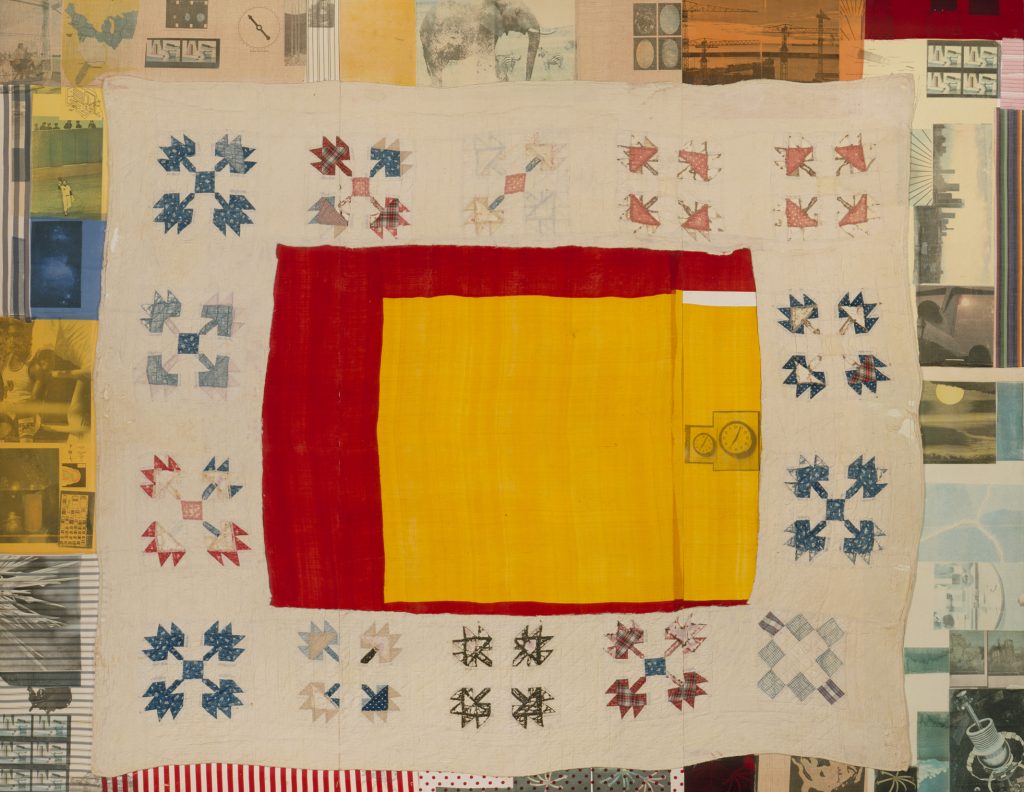Credit Blossom (Spread) (work of art)
Artwork Info
About
A formidably gifted renegade, Robert Rauschenberg uses materials in imaginatively nontraditional ways. In 1955 he made a painting out of his own bed (titled Bed, it is in the Museum of Modern Art in New York), and nearly twenty-five years later, he constructed-rather than painted-Credit Blossom (Spread) out of a worn quilt and fabrics, printed with images appropriated from the media.
In addition to the decorative pleasures of its primary colors and patterned surface, Credit Blossom bears witness to contemporary life. The multiple clock faces (which the repeating patterns in the quilt somewhat resemble) insist that time rules. The artist also pairs contrasts: the natural and the technological, the homespun and the factory-fabricated, the supposedly simpler past and the undeniably complicated present.
tags: textile, change, order, part/whole, subjectivity, pattern, North Carolina
Images
-

Credit Blossom (Spread)
A formidably gifted renegade, Robert Rauschenberg uses materials in imaginatively nontraditional ways. In 1955 he made a painting out of his own bed (titled Bed, it is in the Museum of Modern Art in New York), and nearly twenty-five years later, he constructed-rather than painted-Credit Blossom (Spread) out of a worn quilt and fabrics, printed with images appropriated from the media. In addition to the decorative pleasures of its primary colors and patterned surface, Credit Blossom bears witness to contemporary life. The multiple clock faces (which the repeating patterns in the quilt somewhat resemble) insist that time rules. The artist also pairs contrasts: the natural and the technological, the homespun and the factory-fabricated, the supposedly simpler past and the undeniably complicated present.
